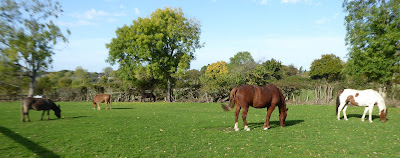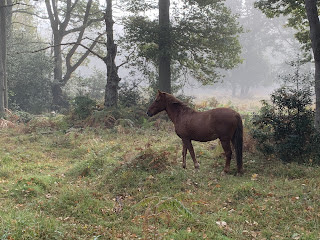For those of you who have not ventured over to my Loisaba blog, which has sadly petered out, here is one of the earliest posts that I made. I was pleased to hear yesterday that William is in the latter stages of preparing for his wildlife examination. His wife, Pauline, and their little son, Louis should be so proud of him. I admire anyone who can study at the same time as doing a full-time job.
William
It’s just turned two in the morning (eight o’clock at night in Swahili time) and William gets out of bed. The black sky, lit only by small stars, hangs like a curtain over the boma. It’s cold and William pulls on an old jumper over his overalls and a pair of Wellington boots. The young sandy-coloured female camel that was giving signs that she was ready to give birth as he went to bed last night is starting to make an effort to bring her baby into the world. Silently, William and his colleagues, Kukuman, and Ekomwa, (Benson is on leave) approach the camel who has been separated from the others overnight, reassuring her and begin to assist her with her labour. The female camel is a new mother but she has been used to the presence of these men since the day that she was born.
As she begins to push, emitting a low rumble of pain, William gently pulls on the baby’s front legs, which are extended forwards with its head on top in the attitude of a diver. It may be a few hours before her baby is on the ground but she trusts the men to help her. By four the baby camel, another female, has been born and the mother begins to lick her all over as William rubs the new calf dry. As the baby begins to make an effort to stand, and having gained limited control of her wobbly legs, she searches for her mother’s teats. At last she finds them, latching on to one of them and takes her first drink of warm, comforting milk. Her mother turns her head, reaching down to touch her baby reassuringly, murmuring to her in a low gurgling sound.
It’s time for the men to leave the two camels now but they can’t go back to bed. In the big part of the circular boma the rest of the herd have to be milked before they are allowed out to graze.
When William, a tall, smooth-faced man with kind eyes, started to work at Loisaba in 2013, he had never encountered camels. He came from Ol Moran in North Laikipia and admits that he was scared of the camels at first.
“They were so big and I didn’t know if they would bite or kick me.” His concern was justified as the camels stand at over six feet tall at the shoulder and their heads and humps are much higher. Their almost dislocated bodies allow them to turn in improbable directions, and they can kick out at any angle. Camels are very expressive, moaning and groaning in conversation with each other, commenting on the world around them, and have a reputation for being extremely grumpy. Even so, handled correctly and with respect, these camels turned out to be very amenable, affectionate even, and extremely perceptive.
Working alongside the camels day and night, William soon learned to love them and they loved him back. The herders spend all of their waking hours with the camels, their basic triangular huts stationed around the boma like the numbers on a clock, a deterrent to any predators. All of their cooking, washing, and cleaning is done outside. At night their dreams are punctuated by the murmuring of the camels, and the occasional high pitched cry and answering call, as the animals settle down to sleep themselves. All of the men at the camel boma are fond of the camels, some preferring the tall, light Somali type, and others the shorter Turkana camel which has darker, curly hair like a Teddy bear.
“I’m really happy when I have helped to deliver a healthy calf,” says William and over the ensuing days he makes friends with the calf, handling it frequently, so that it too becomes quiet and relaxed around people.

For the first few days, the mother and calf remain apart from the herd, and when the other camels are taken out to graze, the two remain close to the boma so that they can build a bond and the vulnerable calf is protected from predators. Once the calf has had all of the colostrum and is much stronger, the pair re-join the main herd during the day and at night the calf is separated from her mother and enclosed with all of the other calves until morning. At four in the morning, when milking begins, the young calves begin to call eagerly and they are let out, one by one to find their mothers. Female camels will not let their milk down unless they have a calf, and it is only once the calf has taken a drink that William and Kukuman approach each female with a stainless steel pail, William on one side holding the bucket up with one knee, and Kukuman on the other, to milk the camel by hand. Kukuman gently pushes the calf away as it nuzzles him, and once they have taken enough milk, the calf is allowed to drink again and accompanies its mother for the rest of the day, able to drink at will.

Once the thirty or so camels that are in milk have been milked, the herd of eighty, including the young calves, pregnant females, and the bull, are taken out to graze on the shrubs and trees – many of which have proven medicinal qualities which find their way into the milk. The camels are lightly guided by Ekomwa whose turn it is today to ensure that they are not attacked by predators such as lion; he also needs to keep a careful eye out for buffalo who would happily squash him flat. Meanwhile William prepares the milk for collection in readiness for the first part of its journey to Nanyuki, while Kukuman checks on the young calves and their mothers, leading them over to a fenced area around the headquarters where they can spend the day in tranquility.


Although William loves the camels, he dreams of being a wildlife guide but knows that he would have to be in for the long haul to make this happen. His education stopped short of High School because he was the eldest son and needed to be the breadwinner for his family. He got married himself earlier this year and sees his wife during his ‘offs’ – two weeks of leave after a period of six weeks away from home. It was William that inspired this blog, his day to day life among the camels unknown to many people for whom camels are not a regular feature. In time it is hoped that guests at Loisaba can be invited to meet the camels, William and the team, and he can explain how this very natural milking operation works; they are sure to benefit from the peaceful company of the camels whose spirituality can fill one’s soul. In the meantime William is being supplied with books on mammals and bird life in East Africa so that he can start to pursue his ambition if he wishes to.




















































.JPG)



